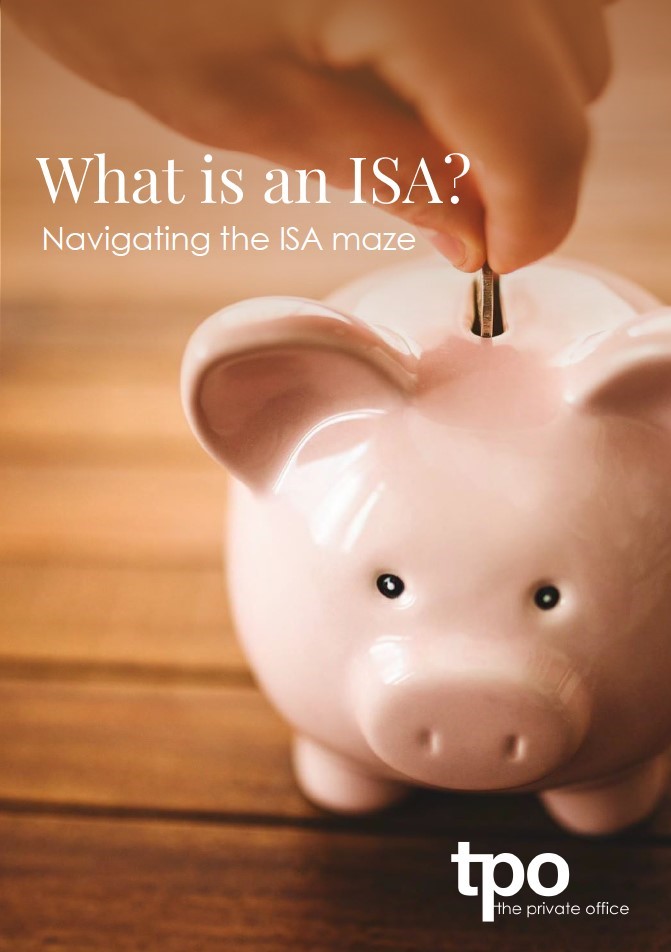What is an ISA?
Navigating the ISA maze
In this guide:
ISAs are potentially one of the first places that savers should look to put their cash when they are planning their finances, after all when the Government is giving you a tax break, you should grasp it with both hands.
However, over the years they have become increasingly complex, with many people struggling to understand the different types of ISA available, let alone work out how much they can put in which, at what stage.
This guide is designed to help you cut through the complexity and maximise the benefits of using ISAs to your advantage.

Not all ISA providers will accept transfers, so you need to make your choice carefully. But The Private Office can help you navigate this minefield.
Provide your details below to receive your free guide.
From this guide:
A brief history of ISAs
On April 6, 1999, ISAs were introduced by the Labour Government at the time, replacing Personal Equity Plans (PEPs) and Tax-Exempt Special Savings Accounts (TESSAs).
PEPs were the precursor to the stocks and shares ISA, whereas the TESSA was, in many ways, similar to a cash ISA. The ISA allowance at the time was £7,000 in total, of which up to £3,000 could be placed in a cash ISA.
Over the years there have been a number of changes to the ISA allowance and since 1 July 2014, the whole of the ISA allowance could be placed, if desired, in a cash ISA. While the allowances have increased and savers have been given more flexibility on what they can invest in and how the allowance is split, there have also been a number of other ISA types that have been introduced in that time.
You can now put your entire allowance (currently £20,000) in a cash ISA, a stocks and shares ISA, an Innovative Finance ISA, a Lifetime ISA (up to a maximum of £4,000) or split it between these four types.
Innovative Finance ISAs are not suitable for all clients.
Download the full guide to read more.
Please note: The value of your investments can fall as well as rise and is not guaranteed.
Related content

A thorough guide to help support you in preparation for your retirement and provide an insight into investment.

It's important to understand the implications of a Defined Benefit pension transfer.

The pension landscape has changed significantly in the last 20 years or so, as the way in which people work has changed.
Our clients speak for us
Meet our expert team
Copy of Copy of Copy of Copy of Copy of Template - People block - list (6.06)
Ellie Jarvis
Senior Financial Adviser - Chartered Financial Planner, APFS

Based in Leeds, Ellie is a Chartered Financial Planner guiding clients nationwide through retirement, tax, investment and broader financial planning decisions.
Alex Hatfield
Partner - Chartered Financial Planner, FPFS, MCSI

Alex, Partner and Chartered Financial Planner, helps clients plan for every stage of life, using cash-flow modelling to give clarity and confidence in their financial future.
Steffan Alemanno
Senior Financial Adviser - Chartered Financial Planner, APFS

Helping clients navigate their financial goals, Steffan is a Chartered Financial Planner who supports a wide range of planning needs and prepares them for both today and the future.


